Joe Biden’s first international trip of his presidency took him to Europe for a series of summits with the leaders of key U.S. allies and partners as well as a face-to-face meeting with President Vladimir Putin of Russia, a rival with whom Biden’s administration aims to have “a stable, predictable relationship.”
Below, experts from Brookings’s Foreign Policy program describe their impressions and conclusions from the atmosphere and results of the recent G-7, NATO, U.S.-EU, and U.S.-Russia summits.
 Madiha Afzal (@MadihaAfzal), David M. Rubenstein Fellow, Center for Middle East Policy and Center for Security, Strategy, and Technology:
Madiha Afzal (@MadihaAfzal), David M. Rubenstein Fellow, Center for Middle East Policy and Center for Security, Strategy, and Technology:
This week’s events have shown just how much the United States’ NATO allies have rallied behind President Biden’s decision to complete the withdrawal from Afghanistan, despite initial concerns about the lack of consultation with allies and some reported skepticism about the decision. NATO troops will reportedly withdraw from Afghanistan in line with the Biden administration’s plan to complete the U.S. withdrawal by mid-July, ahead of schedule. NATO’s messaging this week has also been entirely aligned with the Biden administration — focusing on support for Kabul and the Afghan security forces, signaling an intent to put the war in Afghanistan behind it — but seems removed from the reality on the ground in Afghanistan, where the Taliban are encroaching on provincial capitals, taking over district centers, and engaging in wanton destruction. Yet the focus of the NATO messaging on ensuring the security of Kabul airport does betray a sense of impending doom and a lack of confidence in the Afghan security forces’ capabilities. Depressingly, this is perhaps what 20 years of U.S. and NATO involvement in Afghanistan has come down to.
Afghanistan was also a topic of discussion in Biden’s meetings with both Turkish President Recep Tayyip Erdoğan and Russian President Putin. Both have skin in the game and roles to play when it comes to the future of the country. No significant breakthrough regarding Afghanistan emerged from the meeting with Putin, but Biden and Erdoğan did agree that Turkey would play a lead role in securing Kabul airport.
 Giovanna De Maio (@giovDM), Nonresident Fellow, Center on the United States and Europe:
Giovanna De Maio (@giovDM), Nonresident Fellow, Center on the United States and Europe:
In principle, Biden’s round of meetings sent a positive message about the U.S. commitment to diplomacy and solving global challenges through multilateral efforts. At the G-7, he found European allies keener to embrace caution in economic dealings with China than previously (for an example, two days after the G-7, Italian Prime Minister Mario Draghi stated that Italy is reconsidering its previous commitments vis-à-vis the Belt and Road Initiative).
Similarly, the NATO summit also took place in a renovated atmosphere where trust and diplomacy were back on the table. In particular, the fact that the communiqué mentions better coordination with the EU on defense matters is a positive sign that the U.S. is not opposed in principle to a more integrated European defense. While not promising membership, the fact that the alliance stood up strongly for Ukraine’s territorial integrity also sends a message to Russia. It is yet to be seen if actions will follow such statements.
For the summit with Putin, the bar was very low; it did not take much for Biden to do better than President Donald Trump in Helsinki in 2018. Deliverables were not surprising: return of the ambassadors and renovated cooperation on arms control. On the other crucial issues like cybersecurity, time will be crucial to see if Russia got the message Biden delivered, and whether or not it fears the consequences of sponsoring or enabling cyber-terrorism against the U.S. and its allies.
 James Goldgeier (@JimGoldgeier), Robert Bosch Senior Visiting Fellow, Center on the United States and Europe:
James Goldgeier (@JimGoldgeier), Robert Bosch Senior Visiting Fellow, Center on the United States and Europe:
At every stop along the way on his first overseas trip as president, Joe Biden advanced his domestic and international objectives, strengthening the American position in the world. At the G-7, he gained agreement on a global minimum corporate tax, enabling him to tell Americans he would get businesses to pay their fair share, and he joined his colleagues in a significant global vaccine distribution pledge to move us closer to a post-pandemic world. He reaffirmed that the United States saw its democratic future as tightly bound to its NATO allies, with whom he launched the process to update NATO’s guiding Strategic Concept by the next summit in 2022. He advocated for closer U.S.-European Union ties, something long overdue, and he reached an agreement on the trade dispute between Boeing and Airbus.
The president finished the trip by making clear to Russian President Vladimir Putin that continued efforts to interfere in American elections or to hack American businesses and infrastructure will be met with a swift response. The president has much work to do to implement his vision for American leadership of the world’s democracies as they face challenges particularly from China, and the U.S.-Russia relationship will remain rocky, but President Biden came away from this trip having accomplished his major objectives at this moment.
 Patrick W. Quirk (@patrickwquirk), Nonresident Fellow, Center for Security, Strategy, and Technology:
Patrick W. Quirk (@patrickwquirk), Nonresident Fellow, Center for Security, Strategy, and Technology:
President Biden used the G-7 meeting to assert that Western democracies are in a contest with autocracy, this time with some of America’s closest allies by his side.
Democracy is central to the president’s foreign policy agenda, and he deftly used Cornwall to constructively bring his allies along. The seven powers, along with India, Australia, South Korea, South Africa, and the European Union, reaffirmed their commitment to a “shared belief in open societies” and “democratic values” and outlined key threats to these principles, with rising authoritarianism and corruption chief among them.
It was reassuring to see the G-7 and others also outline the contours of what they might actually do to address these threats, alone and via collaboration. This included protecting civic space, combating corruption, and ensuring that new technologies reflect liberal (rather than authoritarian) principles, among other areas.
Perhaps most consequentially, G-7 leaders agreed to develop a democratic alternative to China’s Belt and Road Initiative — the Build Back Better World (B3W) — to offer low- and middle-income countries “transparent” options for their infrastructure needs.
Some analysts might dismiss these offerings as platitudes, having hoped for more. Yet offering such detail — even if at a higher level of abstraction than preferred — is a step in the right direction, toward action and results.
Key next steps will fall to the leaders’ staff, who have much to do if they want to translate commitments into wins in the ongoing struggle of political systems between liberal government and the centralized, closed model of autocracy.
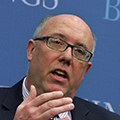 Bruce Riedel, Senior Fellow, Center for Middle East Policy and Center for Security, Strategy, and Technology:
Bruce Riedel, Senior Fellow, Center for Middle East Policy and Center for Security, Strategy, and Technology:
The NATO summit communiqué says surprisingly little about the alliance’s longest ever out-of-area operation in Afghanistan. The allies promised to continue to train the Afghan military but don’t say where that will happen. Apparently Qatar is being considered. They promised to fund the key airport in Kabul that is essential for diplomats and others to operate but it is unclear how security will be provided after the withdrawal of all NATO forces. There is no mention of whether the allies will provide air support for the Afghan army or how to do so. There is no mention of engaging Pakistan which is essential for dealing with the Taliban. It is a reminder that President Biden has yet to communicate and talk with Pakistani Prime Minister Imran Khan. The summit was a healthy return to normal for the alliance but it left some big loose ends for Afghanistan.
 Angela Stent (@AngelaStent), Nonresident Senior Fellow, Center on the United States and Europe:
Angela Stent (@AngelaStent), Nonresident Senior Fellow, Center on the United States and Europe:
The Biden-Putin summit was a success from both the U.S. and Russian standpoints. The Biden administration’s expectations were modest. At a minimum, it hoped to re-establish full diplomatic relations with both countries’ ambassadors returning to their respective posts and to secure an agreement to begin strategic stability talks aimed at containing the dangers of military escalation. Putin had also mentioned these two issues as paramount for Russia and the two sides agreed on them. Biden also wanted to remove Russia from being the toxic domestic issue it was during the Trump years and to treat Russia as a foreign policy challenge going forward.
The main outcome of the summit was an agreement to recreate networks of communication which had atrophied during the Trump administration and to create a baseline for further engagement. The two presidents appear to have established a respectful, businesslike, albeit wary rapport. Judging by who participated in the larger meeting, issues such as Syria, Iran, Afghanistan, and other possible areas of mutual interest and cooperation were likely discussed.
During Biden and Putin’s respective press conferences, it was clear that neither side had conceded anything on the question of human rights or Russia’s culpability in cyber and ransomware attacks. The Biden administration said it wanted to create “guard rails” around the U.S.-Russian relationship to create more predictability. But do the Russians want a more predictable relationship? One test will be whether the cyber and ransomware attacks diminish over the next six months.
 Caitlin Talmadge (@ProfTalmadge), Nonresident Senior Fellow, Center for Security, Strategy, and Technology:
Caitlin Talmadge (@ProfTalmadge), Nonresident Senior Fellow, Center for Security, Strategy, and Technology:
Though short on details, the Biden-Putin summit statement on nuclear war and arms control was an important development — and one highly relevant to the increasingly competitive U.S.-China nuclear relationship.
China should be heaving a sigh of relief that the United States and Russia appear to still be committed to the pursuit of strategic nuclear arms control. Caps on the world’s two largest arsenals benefit China, whose arsenal is dramatically smaller. Without U.S.-Russian arms control, China would be staring down an unconstrained three-way nuclear arms race as a latecomer. Beijing also would have far less information about size, composition, and posture of the U.S. and Russian arsenals.
Unfortunately for China, however, it is highly unlikely that U.S.-Russian strategic arms control will be politically sustainable in the long run without some form of Chinese participation. Strategic stability issues in the U.S.-Russian relationship, such as concerns about conventional-nuclear entanglement and the implications of emerging technologies, are also highly relevant to China.
The United States therefore has strong reasons to want to bring China into an arms control framework, and it might be able to use the existing framework with Russia as a starting point for steps in that direction. Such an effort will not be easy, but the United States should certainly try — and it is in China’s interest to accept.
The Brookings Institution is committed to quality, independence, and impact.
We are supported by a diverse array of funders. In line with our values and policies, each Brookings publication represents the sole views of its author(s).

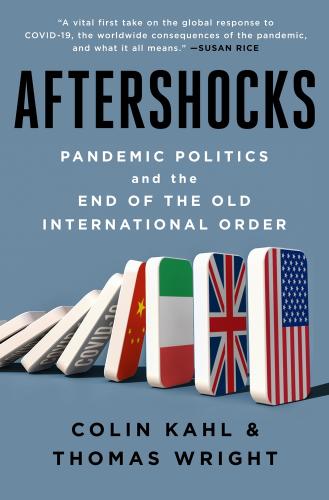
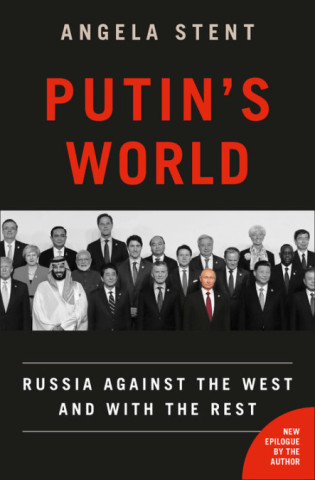
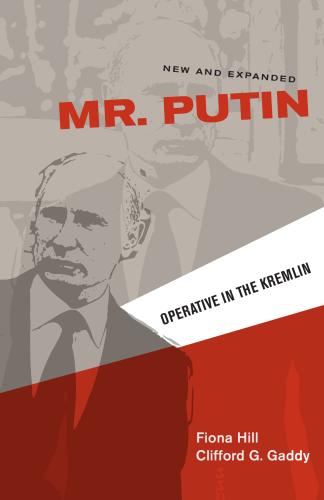
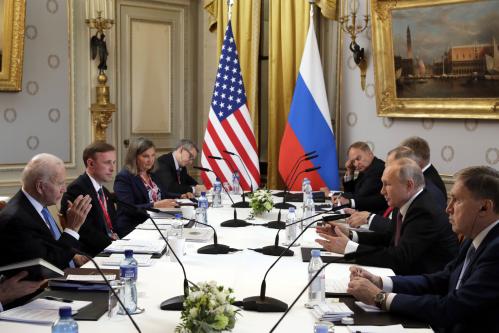
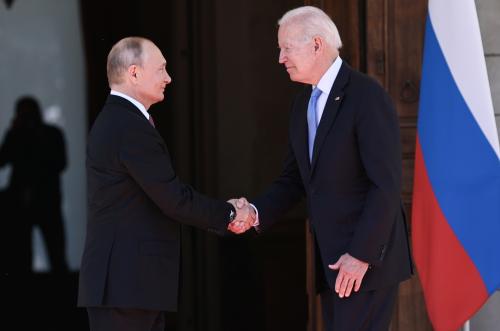
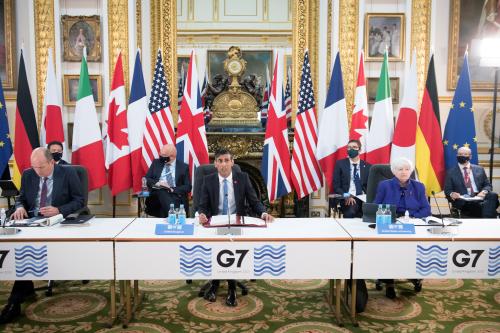



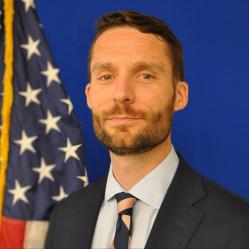
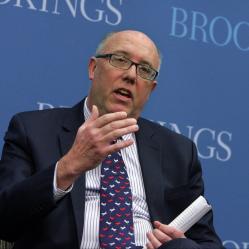





Commentary
Around the halls: Impressions and conclusions from President Biden’s first international trip
June 18, 2021